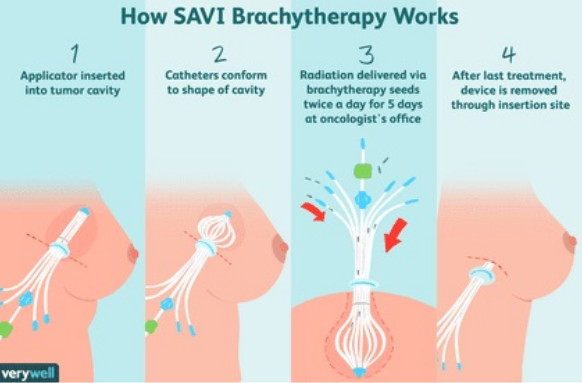OFFICE PROCEDURES
Ultrasound Guided Breast Biopsy
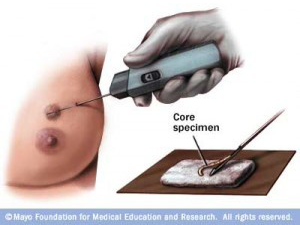
When there is an abnormality that is found on an ultrasound or on palpation, and it is felt that a diagnosis in needed, we use a minimally invasive technique for biopsy called a Ultrasound Guided Breast Biopsy.
Once the procedure is done, small butterfly strips called steri strips are placed in the area of the biopsy. You will then get a mammogram to make sure that the clip deployed and the area is adequately sampled.
You will then be given some post procedure instructions, and a follow up appointment will be made for you to come back and get the results.
During this procedure, you will lay on your back on the exam table. Once the area of concern is noted on the ultrasound, the skin area will be cleaned with some Bata dine solution. Local anesthesia is used to numb the area where the probe will be inserted. A small incision, smaller than your fingernail, will be made. The probe will be inserted. The probe is then advanced. You will hear a loud noise, and will feel pressure. But you should feel no pain. Tissue samples are obtained. Since the area is numbed so well prior to the case, the procedure is very comfortable for the patient.
Once the samples are taken, a clip is placed in the area that was biopsied. This allows us to mark the area that was sampled. This can be very useful to identify the area biopsied in the future. Due to the fact that sometimes the probes take out the entire area that is of concern during sampling, it is a good idea to leave a marker behind. In the case of a malignancy that may be found, the clip is our guide to go to the area of the cancer at the time of the cancer surgery. In cases where the area is benign, and not a cancer, the clip allows us to know what area was sampled. The clip does not set off alarms at the airport, and it does not interfere with MRI technology.
The entire procedure usually takes about 45 minutes for each site to be biopsied. Since this is done under local anesthesia, you can drive yourself back and forth to the procedure. You can eat and drink anything you want the day of the biopsy.
One week prior to the biopsy, no aspirin, Aleve, Motrin, Coumadin, vitamin E, or any other blood thinners. Those who are on the aspirin or coumadin for cardiac issues need to notify their doctors who are prescribing these medications and let them know that you will be having a biopsy. Therefore, you will be off the medications for a week prior to the procedure.
Stereotactic Breast Biopsy
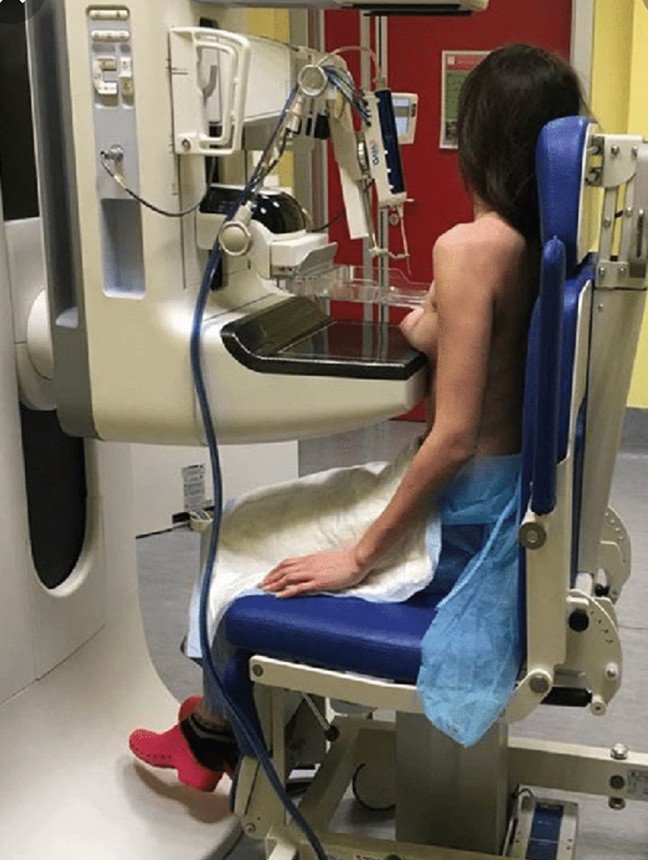
When there is an abnormality that is found on a mammogram, and it is felt that a diagnosis in needed, we use a minimally invasive technique for biopsy called a Stereotactic Breast Biopsy.
Once the procedure is done, small butterfly strips called steri strips are placed in the area of the biopsy. You will then get a mammogram to make sure that the clip deployed and the area is adequately sampled.
You will then be given some post procedure instructions, and a follow up appointment will be made for you to come back and get the results.
The entire procedure usually takes about 45 minutes for each site to be biopsied. Since this is done under local anesthesia, you can drive yourself back and forth to the procedure. You can eat and drink anything you want the day of the biopsy.
One week prior to the biopsy, no aspirin, Aleve, Motrin, Coumadin, vitamin E, or any other blood thinners. Those who are on the aspirin or coumadin for cardiac issues need to notify their doctors who are prescribing these medications and let them know that you will be having a biopsy. Therefore, you will be off the medications for a week prior to the procedure.
Partial Breast Radiation
This is where a catheter is placed in the cavity where the cancer was removed to give radiation directly in the cavity that the cancer was originally in. This is only for lumpectomy patients that will need radiation, and not for mastectomy patients that require radiation.
The benefits of this procedure are that the radiation can be completed twice a day for five days. Then the catheter is removed. This is in contrast to the full six weeks of radiation that is the traditional duration of radiation treatment. In addition, once you have had full breast radiation, if the cancer were to return, you are committed to a mastectomy, no matter how small a cancer a patient may have. With Partial Breast Radiation, if there is a cancer in another quadrant of the breast, the patient can still have breast conserving surgery.
Genetic Testing and Counseling
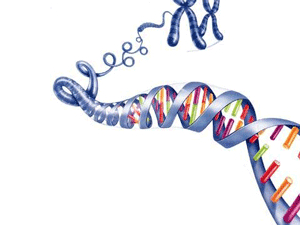
There are three ways to test for the genetic mutation.
1. If you are high risk, you will get a comprehensive analysis. This is a full examination of the
genes known to date that put patients at risk for getting breast cancer. The most well known
are the BRCA mutations. But there are so many more known mutations. This list continues to
grown as the field of genetics develops. Our center continues to provide the most updated
panel.
2. If you already have a family member who has a mutation, then you will undergo a single site
analysis. This is where the mutation specific analysis is done for individuals at one site only, the
site that the other family members are positive for.
3. If you are of Ashkenazi Jewish ancestry, we will do a multisite analysis of the three most
common mutations in individuals of Ashkenazi Jewish ancestry.
The genetic testing is done with a swab of the cells in your mouth. No needles.
This is a two visit process:
1. On the first visit, you will under go a session where the test is explained to you. You will watch a video that will give you better understanding of the test as well. Your consent will be obtained, and the tissue will be collected.
*Important – No eating or drinking one hour prior to sample.
2. On the second visit is where you will get the results of the test, and the explanation what your test result means. You will be given options if you are positive for the gene mutation(s).
PATIENT PRE & POST PROCEDURE INSTRUCTIONS
PRE-OPERATIVE INSTRUCTIONS:
- No Aspirin, Motrin (or Aleve products), Coumadin, Plavix, Herbs or Vitamin E for 1 week prior
to your appointment. You may take Tylenol or Extra Strength Tylenol only. - Please shower the morning of your procedure. You will not be able to shower afterwards.
- You may drive yourself to and from your appointment.
- Arrive 30 minutes early.
- Limit your physical activities the day of your procedure.
- You may not return to work the day of your procedure.
- May return to normal activities the day after your procedure.
- You will need to return to our office within 1 week for the results of the biopsy and a post-operative
check up. We do not give results over the phone. - If you have any questions please do not hesitate to call the office.
Please remember to allow plenty of time for this appointment. Unavoidable delays may occur on procedure days. Each patient is different and we strive to provide individual attention to all of our patients.
Download this Information
- Do not eat or drink after midnight the day prior to your surgery.
- Shower the day of surgery to decrease the chances of infection.
- Ask anesthesia at your pre-admission testing regarding which medications you are allowed to take the day of your surgery.
- Do not take any aspirin or aspirin products the week prior to your surgery. This includes Motrin, Advil, Aleve, Coumadin, Plavix, Vitamin E, Herbs, or Any other anti-inflammatory medication.
- Notify your ordering physician that you are discontinuing medications like Coumadin, or Plavix.
- Make sure your have someone to drive you back and forth from the hospital the day of your surgery. We cannot allow a cab to pick you up.
- If you DO NOT bring someone with you to drive you home or stay the night of surgery, the hospital will cancel the case.
- You will need to make arrangements for someone to be with you at home the first night of your surgery.
- You will need to return to our office within three business days for a post operative wound check.
- If you have any question, please call the office.
Your procedure will be at one of the following:
ADVENT HEALTH HOSPITAL – WINTER PARK – (407) 646-7000
200 North Lakemont Drive – Winter Park, Florida 32792
FLORIDA SURGICAL CENTER – (407) 830-0573 | Fax: 407-830-4373
180 Boston Avenue, Altamonte Springs, FL 32701
ORMC – ORLANDO – (407) 841-5111
1221 Kuhl Avenue – Orlando, Florida 32806
IF YOU ARE HAVING NEEDLE LOCALIZATION, YOU MUST BRING YOUR MAMMOGRAM FILMS TO THE HOSPITAL PRIOR TO YOUR SURGERY DATE. FOR PATIENTS WHO ARE HAVING THEIR PROCEDURES AT FLORIDA SURGICAL CENTER, AND ARE HAVING A WIRE PLACED FOR NEEDLE LOCALIZATION, YOU WILL BE GOING TO SAND LAKE IMAGING IN MAITLAND FOR THE WIRE TO BE PLACED.
RAYUS IMAGING – (407) 363-2772
1640 N. Maitland Ave, Maitland, Florida 32751
Download this Information
POST-OPERATIVE INSTRUCTIONS:
PATIENT CARE INSTRUCTIONS
Things you will need to buy prior to your procedure:
– Disposable gloves
– Cotton tipped applicators
– Bacitracin antibacterial ointment (1)
– 4×4 gauze pads
– Micropore paper tape (2 rolls)
– Alcohol
For care of the catheter site while the catheter for Radiation Therapy System (RTS) is in place:
DO keep catheter site clean and dry.
DO wear a support bra at all times.
DO change the dressing at home if it becomes saturated and if directed by your physician.
DO NOT shower. Sponge baths only
DO NOT remove any caps from the ends of the catheter
The steps outlined below should be followed when changing your dressing.
Step 1: Remove soiled dressing:
- Wash your hands with soap and water.
- Put on one pair of clean disposable gloves.
- Remove soiled dressing and place into plastic bag and discard.
Step 2: Cleanse catheter exit site:
- Cleanse the catheter exit site with Iodine swabs.
- Cleanse the catheter site by swabbing in a circular motion starting at the exit site. Repeat twice with clean sponge sticks, moving away from the exit site with each cleansing.
Step 3: Apply antibiotic ointment:
- Open the antibiotic ointment package and place a small amount on a cotton tipped applicator swabs.
- Apply a very thin film of antibiotic ointment to the skin at the exit site of the catheter shaft.
Step 4: Dress the catheter with clean dressings:
- Place one split drain sponge around the catheter shaft with the split facing down. Place a second split drain sponge around the catheter shaft and on top of the first drain sponge with split facing up.
- Place 2 gauze 4×4 over the split drain sponges.
- Using paper tape, secure the dressing to your skin.
- Discard disposable gloves in trash.
For care of the catheter site after the catheter is removed.
Once your catheter has been removed, you will continue to dress the catheter site until the catheter site is no longer draining and has closed over. You will follow the steps above to dress the site after the catheter has been removed (although the catheter will no longer be in your breast.)
If you experience any of the following symptoms while your catheter is in place or after removal of the device, call our office:
- Fever greater than 100F
- Redness or red streaks on the treated breast.
- Swelling or warmth in the treated breast.
- Sudden drainage of a large amount of fluid from the catheter site (a small amount of thin clear or reddish drainage is expected)
- Foul odor or a creamy, pale yellow or yellow-green drainage from the catheter site.
If you have questions, please call: Dr. Sachedina, D.O., FACOS at (407) 740-5127
PLEASE MAKE SURE TO TAKE YOUR ANTIBIOTICS
AS PRESCRIBED WHILE YOUR CATHETER IS IN PLACE.
Click here to learn more about Partial Breast Radiation Therapy System
Care After Atec/Stereotactic Core Biopsy
1. Place an ice pack inside your bra, on top of dressing 4 to 6 hours, 30 minutes on and 30 minutes off.
2. Do not shower or bathe for 24-hours. You may bathe with the steri-strips (tape) in place on your skin.
If the tape comes off, it does not need to be replaced.
3. Leave the pressure dressing on for 24-hrs. Expect some drainage on the dressing.
4. You will probably have mild discomfort and you may have slight bruising on the area where the needle entered the skin.
5. If you feel you need to take something for the discomfort you may take TYLENOL ONLY. DO NOT TAKE ASPIRIN or Anti inflammatory agents like Aleve or Advil.
6. Do not participate in strenuous activities for 24-hours. (I.E. no heavy lifting, sports or exercising).
7. You may return to work the next day after your procedure.
8. One week after your procedure, you may remove the steri-strip (tape).
9. Watch for extensive bleeding or pain. For bleeding, hold pressure for 30 minutes. If either occurs, contact Dr.Sachedina’s, D.O., FACOS office at (407) 740-5127.
10. Expect drainage on the ace wrap if one is placed since this is a sutureless biopsy. DO NOT REMOVE OR ALTER YOUR ACE WRAP FOR 24-HOURS.
11. Wear your bra during the day and night.
12. Follow-up with Dr. Sachedina, D.O., FACOS at the follow up appointment given to you when you left our office.
Aspiración de Quiste / Atec Biopsia / Biopsia Estereotáctica
1. Si es necesario aplique hielo dentro de su braciel sobre la incision por 4 a 6 horas por 30 minutos si y 30 minutos no.
2. Si usted se siente que necesita tomar algo para el dolor, solo tome Tylenol y no productos que contengan aspirina.
3. Favor de no remover el bendaje por 24 horas. Espere un poco de desague en su bendaje.
4. Favor de esperar 24 horas despues de el procedimiento para ducharse. Despues de las 24 horas – se puede duchar con las tiras o benditas que fueron localizada en su piel en la area de incisión. Si se salen las tiras o benditas del steri – no es necesario que las reemplase.
5. Probablemente sentiras molestia y es posible que la area en donde entro la aguja este un poco morada.
6. En caso que usted sangre o sienta extensos dolor, precione el area por 30 minutos. Si el sangrado no para LLAME A LA OFICINA INMEDIATAMENTE.
7. Limitise a cualquier actividad fisica el dia de el procedimiento. Por favor no le vante objetos pesados, no cocine, limpie, ejercise y no deportes por las primera 24 horas.
8. Despues de las 24 horas, usted puede recgrsar ha su trabajo con actividades normal.
9. Usar su braciel 24 horas al dia, hasta el dia ques regrese a su sita.
10. Regrese a la cita de seguimiento con la Doctora Sachedina
SI TIENES ALGUN PROBLEMA, LLAMENOS AL (407) 740-5127.
GLOSSARY
Most-commonly Asked Terms
-
Lumpectomy
This is when we remove an area in the breast that either has a cancer, or a high risk lesion like atypical ductal hyperplasia or atypical lobular hyperplasia.
-
Margins
This is a term used with lumpectomy cases done for a cancer. The margins have to be cleared (meaning the cancer is removed and there is normal tissue taken around the cancer to ensure that the cancer has been removed in its entirety.) This is important to decrease the risk of a re-occurrence of the cancer.
-
Modified Radical Mastectomy
This is where the breast is removed, and there is sampling of the lymph nodes, either with a sentinel node biopsy or a axillary node dissection (removal of the lymph nodes under the arm).
-
Partial Breast Radiation
This is where a catheter is placed in the cavity where the cancer was removed to give radiation directly in the cavity that the cancer was originally in. This is only for lumpectomy patients that will need radiation, and not for mastectomy patients that require radiation.
-
Port Placement/Removal
When patients are in need of intravenous chemotherapy, they may require of port. The port is a catheter that is placed to give the chemotherapy, and to draw blood from the patient. This procedure is done under a twilight sleep sedation. At our center, the port we use is placed directly underneath the skin. Most patients find the port to be a very useful tool, as it spares the patient from multiple needle sticks in their arm. Patient with difficult veins should have a port placed for their chemotherapy. Upon completion of the chemotherapy, the port is then removed under a twilight sleep. The placement and removal of the port is done on an outpatient basis at the hospital.
-
Sentinel Node Biopsy
This is a procedure to check the lymph node under your arm to see if the cancer has spread. This node is the first node where the cancer would spread. This procedure is not for everyone. If the lymph node was involved either diagnosed by biopsy, or clearly seen on your X-ray studies, you would not be a candidate for this procedure.
-
Simple Mastectomy
This is the removal of the breast only. There is nothing done to the lymph nodes.
3-D DIGITAL MAMMOGRAM
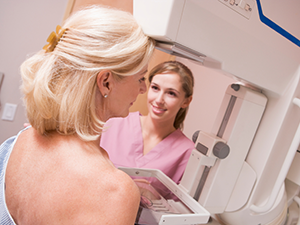
Our state of the art 3-D Digital Mammograms are done on the latest low dose Radiation Hologic 3D Selenia Mammogram Tomosynthesis System.
Mammograms remain the gold standard for screening patients over the age of 40 years. This test has saved millions of lives. The mammograms are low dose in radiation. Mammography is a low-powered x-ray technique that captures a picture of the internal structure of the breast. Additional angles and magnified views are taken of suspicious areas. A mammogram may help in the diagnosis of breast problems, including cancer.
When you come in for your mammogram’s, you will need to:
1. Bring all your previous mammogram’s for comparison.
2. A script for the mammogram to be preformed
3. No powder, perfumes, or deodorant.
4. Wear a 2 piece outfit for your comfort.
REMEMBER!! Mammogram’s are not 100% at diagnosing a breast cancer! 6 to 10 percent of lesions are missed on mammograms.
So remember to do a frequent breast exam. If there is a change in your exam, you need to be seen for an evaluation regardless of what your last mammogram showed. CHECK YOURSELF TO SAVE YOURSELF!

Roseann Vera
Lead Mammography Tech
Roseann Vera had been the Lead Mammogram Technologist at Central Florida Breast Center since 2009. She is from Chicago and has been a Technologist for over 3 decades . “I absolutely love my job and my patients. Knowing that I’m making a difference in someone’s life is very rewarding to me. I am patient, caring and kind to all my patients. I always try to be as gentle as I can in doing mammograms. I look forward to seeing my patients over the years when they come in for their mammograms.” She enjoys working with Dr. Sachedina and with the entire team at the Central Florida Breast Center.
BREAST ULTRASOUND

Breast ultrasound, especially in dense breast tissue , is invaluable when it comes to finding small malignancies. That is the reason that breast ultrasound is done on patients routinely as part of their examination. This consists of putting gel on the breast and using the ultrasound probe to look through the entire breast in real time. Think of it as a stethoscope into the breast.
HIPPA/Privacy Notice
We are required by law to maintain the privacy of your health information and to give you our Notice of Privacy Practices (this “Notice”) that describes our privacy practices, legal duties and your rights concerning your medical information. Your health information includes your individually identifiable medical, insurance, demographic and medical payment information. More information about our policy can be found here.
We collect information from you when you fill out a form.
When ordering or registering on our site, as appropriate, you may be asked to enter your: name, e-mail address, mailing address or phone number. You may, however, visit our site anonymously.
Any of the information we collect from you may be used in one of the following ways:
To improve customer service (your information helps us to more effectively respond to your customer service requests and support needs)
We implement a variety of security measures to maintain the safety of your personal information when you enter, submit, or access your personal information.
We offer the use of a secure server. All supplied sensitive/credit information is transmitted via Secure Socket Layer (SSL) technology and then encrypted into our Database to be only accessed by those authorized with special access rights to our systems, and are required to keep the information confidential.
After a transaction, your private information (credit cards, social security numbers, financials, etc.) will not be stored on our servers.
Yes (Cookies are small files that a site or its service provider transfers to your computer’s hard drive through your Web browser (if you allow) that enables the sites or service providers systems to recognize your browser and capture and remember certain information.
We use cookies to compile aggregate data about site traffic and site interaction so that we can offer better site experiences and tools in the future.
If you prefer, you can choose to have your computer warn you each time a cookie is being sent, or you can choose to turn off all cookies via your browser settings. Like most websites, if you turn your cookies off, some of our services may not function properly. However, you can still place orders by contacting customer service.
We do not sell, trade, or otherwise transfer to outside parties your personally identifiable information.
This does not include trusted third parties who assist us in operating our website, conducting our business, or servicing you, so long as those parties agree to keep this information confidential. We may also release your information when we believe release is appropriate to comply with the law, enforce our site policies, or protect ours or others rights, property, or safety.
If we decide to change our privacy policy, we will post those changes on this page.
This policy was last modified on July 10, 2013

